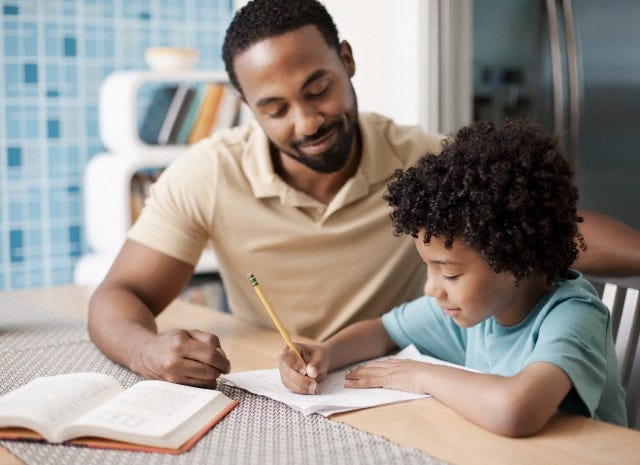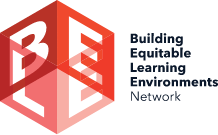An overview of the BSCA education funds

By the BELE Network
With the school year well underway, educators have an opportunity to redefine what they mean by student safety. Parents are justifiably concerned about their kids’ safety at school, and Congress has made important investments in protecting students. Those investments, however, should prioritize evidence-based approaches that are aligned with the science of learning and development and make students safer by creating environments where they feel accepted and valued. In doing so, we can ensure all students feel safer and avoid “hardening” schools into severe, inflexible environments that can actually make some students less emotionally and physically safe.
Educators can redefine school safety in a way that continues to keep students safe from physical violence, while also creating supportive learning environments that benefit students’ mental health and well-being. Together, these pieces all contribute to a better student experience at school — the kind that leads to stronger academic and life outcomes after graduation. This commitment is shared by the U.S. Department of Education as well as school districts across the country. And it isn’t a commitment only on paper — there’s real money behind it, too.
The investment
Congress recently greenlit $1 billion in funding through the Bipartisan Safer Communities Act (BSCA) for states and districts to invest in creating safer and healthier learning environments for students. State education agencies will direct the funds allocated to their states to high-need local education agencies (such as school districts and county education offices) for use in efforts specifically towards that end. You can find a state-by-state breakdown here. Examples of what these efforts can look like include:
- Support school-based, trauma-informed mental health services
- Establish learning environments that enhance learning skills
- Improve instructional practices for developing relationship-building skills
You can find more information about allowable activities here.
Recommendations
District and county applicants will have to identify needs unique to their district(s) and state agencies will decide how to disburse federal funding. To that end, Secretary Cardona outlined three areas where he encourages schools and districts to focus their commitments. These recommendations strongly align with The BELE Network’s Essential Actions for building equitable learning environments and improving student experience, and we’re excited to contribute our own resources in support of districts seeking to understand more about how to take actionable steps towards these commitments:
- Implement comprehensive, evidence-based strategies that meet each student’s social, emotional, physical, and mental well-being needs; create positive, inclusive, and supportive school environments; and increase access to place-based interventions and services.
In other words, schools should redesign systems and structures to put a student’s experience first. What does that look like? We’ve written about how schools can rethink their back-to-school nights or open houses to build more meaningful connections with students and the wider community and how they can align all school efforts around a clear vision of education for all students that advances resource equity. Ultimately, it’s all about unlocking the innovation of schools and using all tools — including student-centered data collection — to better understand how students are learning, what works, and how whole communities can contribute to an improvement of the student experience. Learn more by taking a look at BELE Essential Actions (EAs) 1, 2, and 6. - Engage students, families, educators, staff, and community organizations in the selection and implementation of strategies and interventions to create safe, inclusive and supportive learning environments.
Perhaps the most important thing for schools and districts to realize is that they are not alone in this process of redesigning education. A key priority for them is creating conditions for mutually trusting relationships with local communities, caregivers, and other school staff themselves. BELE resources that can support this goal include guidance on how school boards and families can have productive interactions despite heightened tensions and inviting community members to discuss the merits of social emotional learning (SEL) in school. Learn more with EAs 4 and 5. - Design and implement policies and practices that advance equity and are responsive to underserved students, protect student rights, and demonstrate respect for student dignity and potential.
This is what all of this work ultimately boils down to: using redesigned strategies and community input to design and implement practices that create a better student experience. Take the example of math classrooms: who gets to be a math person? Stronger, more equitable policies can expand the definition of “math person” to fit students who might not traditionally fit that mold. Another useful BELE resource is our ongoing series of Learning Briefs, the first of which explores critical insights from equity initiatives in BELE partner districts. Of course, districts and county offices are not alone. They can learn from the examples of other districts, such as Columbus City Schools, and adapt successful policies that are known to work elsewhere. Refer to EA 7 for more information.
The BELE Network is working alongside partner members and organizations to best support schools and districts in mapping out how to allocate funds. We encourage you to visit the BELE Resource Library, an evolving repository of resources and recommendations, to find the resources best suited to your unique needs. You can also subscribe to the BELE monthly newsletter here to get the latest learnings straight to your inbox.
The BELE Network is dedicated to reimagining our inequitable school system that has failed too many for too long, and is committed to transforming our classrooms into learning environments that nurture the intellectual, emotional and cultural growth of all students — especially students of color. Learn more about BELE on our website, and access our resource library to get the best and most up-to-date thinking on how to make learning environments more equitable.

